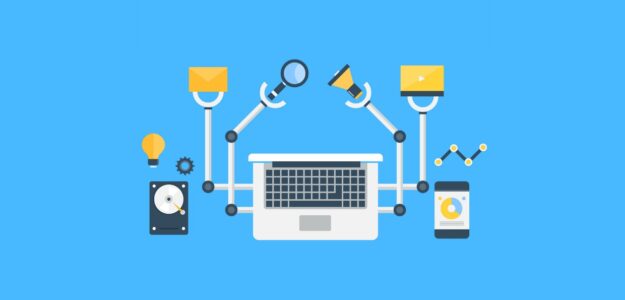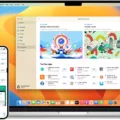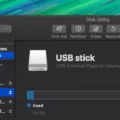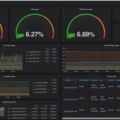Automation software has become increasingly popular in recent years, and for good reason. Automation software is designed to automate repetitive tasks, freeing up time and resources that would otherwise be spent on manual labor. This can be an invaluable asset in any business, as it allows employees to focus on more important tasks and projects that require more creative thought.
The use of automation software is widespread across many industries. Automotive companies have been using automation for decades, but now the technology is being used in a variety of other industries including finance, healthcare, education, logistics, manufacturing, and even retail. Automation software can be used for processes such as data entry, order processing, payment processing, inventory tracking, and customer service. By automating these processes businesses can save time and money while increasing efficiency and accuracy.
There are many different types of automation software available on the market today. The most popular include robotic process automation (RPA), machine learning algorithms (MLAs), and natural language processing (NLP). Each type of automation software has its own unique benefits and drawbacks depending on the specific needs of a business or organization.
Robotic process automation (RPA) is one of the most widely used forms of automation software because it enables businesses to automate mundane tasks with minimal effort. RPA works by assigning virtual robots to perform a series of pre-defined tasks that are usually too tedious or time-consuming for humans to do manually. This type of automation is ideal for businesses that need to quickly complete a large number of repetitive tasks without having to invest in additional staff or resources.
Machine learning algorithms (MLAs) are another type of automation software that can be used to process large amounts of data quickly and accurately. MLAs use artificial intelligence (AI) technology to analyze data sets and make predictions about future trends or events based on historical data points. MLAs are often used in predictive analytics applications such as customer segmentation or fraud detection systems.
Natural language processing (NLP) is the last type of automation software we’ll discuss here today. NLP uses AI technologies like voice recognition and text analysis to understand human language commands so they can be executed by machines without any need for programming code or manual input from humans. NLP is commonly used in conversational interfaces like chatbots which can provide customer service support or answer questions about products or services quickly and accurately without requiring human intervention.
These are just some examples of how businesses can use different types of automation software to improve their operations by eliminating tedious manual labor tasks from their workflows while also saving time and money in the process. Whether you’re looking for RPA tools for automating mundane tasks, MLAs for predictive analytics applications, or NLP tools for conversational interfaces—there’s an automation solution out there waiting for you!

The Benefits of Automation Software
Automation software is an application designed to automate repetitive and routine tasks. It can be used in a variety of industries, from manufacturing to healthcare, to manage processes and streamline workflows. Automation software can take the form of bots, artificial intelligence (AI), or machine learning algorithms that are programmed to perform certain tasks with minimal human input. Automation software can also be used for data analysis, customer service automation, process optimization, and much more. By automating mundane and complex tasks, businesses can save time and money while increasing accuracy and efficiency.
What Is The Best Automation Software For Businesses?
The best automation software depends on the needs of your organization and the type of automation tasks you are looking to accomplish. Generally speaking, Selenium is considered to be one of the most popular automation testing tools available today. Its open-source nature, availability across multiple languages and platforms, and ability to script complex test cases make it a great choice for automating common web application tasks. However, if you’re looking for a more comprehensive solution, there are several other great choices as well.
Telerik Test Studio provides an all-in-one approach to test automation with support for web, mobile, and desktop applications. Katalon Studio is another popular tool that focuses on web and mobile automation with built-in features like record-and-playback capabilities and AI-assisted object recognition. LambdaTest is a cloud-based platform for automating cross-browser testing with support for over 2000 browsers and devices. Kobiton is another cloud-based platform that specializes in mobile device testing by providing access to real devices in the cloud. Finally, TestArchitect and Cucumber both focus on keyword-driven test automation while Appium offers an open-source framework specifically designed for mobile applications.
Ultimately, deciding which automation software is best ultimately comes down to your individual needs and preferences. Consider the types of tests you need to run, how often you need them executed, if you need access across multiple platforms or devices, what type of budget you have available, etc., before deciding on a specific tool or suite of tools for your automation needs.
The Best Automation Software for Windows
The best automation software for Windows is WinAppDriver. It is an open-source tool that enables users to create automated tests for Windows desktops and store applications using the WebDriver protocol. WinAppDriver enables users to write tests in multiple languages including C#, Java, Ruby, Python, and JavaScript. It also provides support for multiple frameworks such as NUnit, TestNG, and Appium. WinAppDriver also supports image recognition with which users can identify elements on the screen by their images rather than by their attributes like name or class. Furthermore, it includes a built-in object repository and debugging tools that help users to design better tests more quickly and easily. In short, WinAppDriver is a great automation tool that helps increase test coverage and reduce manual testing efforts.
Top 4 RPA Tools
The top four RPA tools are Uipath, Automation Anywhere, Blue Prism, and Microsoft Power Automate. Uipath is a comprehensive automation platform with advanced features such as AI-based robotic process automation (RPA). Automation Anywhere is an enterprise-level RPA tool that can automate complex business processes. Blue Prism is a cloud-based RPA tool that provides scalability and extensibility for large organizations. Microsoft Power Automate enables users to create automated workflows to connect apps and services without writing code. Each of these tools offers a powerful set of features designed to make automation easier and more efficient.
Examples of Automation
1. Automated Search Engines: Automated search engines use artificial intelligence to quickly and accurately search the web for relevant results. They can be used to find information quickly and easily, and are often integrated into websites or online platforms.
2. Autonomous Vehicles: Autonomous vehicles are becoming increasingly popular as technology advances. These vehicles can sense their environment and navigate without human input, using sensors, GPS navigation systems, and other navigational components to move safely from one location to another.
3. Robotic Manufacturing Processes: Automation is often used in manufacturing processes such as welding, assembly, and packaging in order to increase efficiency and reduce costs. Robotics can be used to handle hazardous materials, perform repetitive tasks quickly, or comply with safety regulations more reliably than human workers.
4. Home Automation Systems: Smart home automation systems allow users to control lights, appliances, security systems, heating/cooling systems and more from a single device or app. These systems offer greater convenience for users as well as energy savings by allowing them to automate routines such as turning off lights when no one is home or setting temperatures at crtain times of the day automatically.
5. AI-Powered Chatbots: AI-powered chatbots are computer programs that use natural language processing (NLP) to mimic conversations with people in order to answer questions or provide service on websites or applications. They can save companies time and money by automating customer service functions such as answering basic questions about products or services without requiring customers to reach out directly.

Source: ashlingpartners.com
Can Excel Be Used for Automation?
Yes, Excel can be used for automation. Through the use of macros, you can record a series of actions such as formatting a range of cells, copying and pasting data from one sheet to another, or creating complex formulas. Macros are stored in the Visual Basic for Applications (VBA) language, which is built into Microsoft Office applications like Excel. This allows you to easily repeat a set of commands whenever you need it. Additionally, you can use macros to quickly create charts and graphs from your data in Excel. The Macro Recorder also makes it easy to automate a repetitive task by recording your steps within Excel so that these can be repeated at any time.
Types of Automation
The three basic types of automation are fixed automation, programmable automation, and flexible automation.
Fixed automation uses a predetermined sequence of operations to produce a product or service, and requires little to no human input. This type of automation is most often used for high-volume production with minimal variations from one item to the next.
Programmable automation utilizes computer-controlled machinery and robotics to produce goods according to instructions provided by the operator. This type of automation is ideal for producing multiple versions of the same item with minor variations in size or design.
Finally, flexible automation allows for a higher degree of customization and versatility in production. It utilizes machines that can be programmed quickly and easily, allowing for frequent changes in the production process to keep up with evolving customer demands or industry trends.
Learning the Easiest Automation Tool
When it comes to automation tools, the easiest to learn is often subjective and depends on individual preferences, experience, and skill sets. However, popular choices for automation tools that are relatively easy to learn include Katalon Studio, TestComplete, SoapUI, IBM Rational Functional Tester (RFT), Tricentis Tosca, Ranorex Studio, and Postman.
Katalon Studio is particularly easy to learn as it has a comprehensive set of features that allow users to quickly create automated tests without needing advanced coding knowledge. It also offers helpful tutorials and online documentation for those getting started with automation.
TestComplete is another user-friendly automation tool. It provides an intuitive graphical user interface (GUI) that enables users to get up and running quickly. It also has an object recognition feature which helps automate test creation even faster.
SoapUI is a free tool that allows users to create functional tests for REST APIs easily with its built-in scripting language Groovy. Its powerful drag-and-drop feature makes it simple for users of any skill level to create tests quickly with minimal coding knowledge required.
IBM Rational Functional Tester (RFT) simplifies testing by providing a powerful set of features such as keyword-driven testing and data-driven testing which makes creating tests easier than ever before. It also provides helpful tutorials and step-by-step guidance for those unfamiliar with the tool or new to the world of automation testing.
Tricentis Tosca is an automated testing platform that helps simplify test case design by leveraging model-based test automation technology and artificial intelligence capabilities. Its intuitive drag-and-drop interface makes it easy to build automated tests quickly without any programming expertise needed.
Ranorex Studio offers an easy way for beginners in software testing to get started with automation quickly using its record & replay feature which enables users to effectively create automated tests without writing code manually. Additionally, its comprehensive suite of tools helps make automating even complex scenarios simpler than ever before.
Finally, Postman is one of the most popular tools used for API automation due its ease of use and overall robustness when it comes to creating automated API tests efficiently and quickly. Postman’s collection runner allows users to run multiple requests simultaneously making it easier than ever before to automate API tests efficiently in no time at all!
The Benefits of Simple Automation
The simplest form of automation is the use of automated workflows. Automated workflows are a series of tasks, processes, and approvals that can be set up to run according to predetermined rules and triggers. They allow you to automate repetitive tasks, monitor projects, and keep track of progress. By setting up automated workflows, businesses can save time and energy as well as increase efficiency. Automated workflows also reduce errors associated with manual processing and help to ensure accuracy. Additionally, automated workflows can be used to quickly respond to customer inquiries or process orders.
Comparing RPA and Selenium
The answer to this question depends on the specific needs of your business. While both RPA (Robotic Process Automation) and Selenium are powerful automation tools, each has its own unique set of advantages and disadvantages.
RPA is a cost-effective way to automate manual tasks, especially when you have a large number of tasks that need to be completed in a short amount of time. It is also very helpful for streamlining business processes, increasing efficiency, and improving accuracy. However, it can be difficult to configure and maintain and may require additional programming knowledge or skills.
Selenium is an open-source tool used for automating browser activities such as web browsing, filling out forms, clicking links, etc. It is much easier to use than RPA and can be quickly implemented without needing extra programming skills or knowledge. Selenium works well with dynamic web pages that change frequently since it can detect changes quickly and adapt accordingly. On the other hand, working with dynamic pages can be more difficult with RPA since it requires more configuration and maintenance.
In conclusion, the choice between RPA and Selenium really depends on the specific needs of your organization. If you have complex tasks that need to be automated quickly, then RPA may be the better choice for you. However, if you’re looking for a tool that’s easy to implement and maintain then Selenium might be the better option for you.
Conclusion
In conclusion, automation software is a powerful tool that can help streamline processes and increase efficiency in almost any industry. Automation software can reduce the amount of manual labor involved in tasks and minimize the need for human input. The top automation testing tools for 2022 are Selenium, Telerik Test Studio, Katalon Studio, LambdaTest, Kobiton, TestArchitect, Cucumber, Appium, and many others. The best RPA tools of 2022 are UiPath, Automation Anywhere, Blue Prism, Microsoft Power Automate, Appian, Datamatics, Nintex RPA, and Kofax. Each tool has its own distinct features that make it suitable for various tasks. Through the use of automation software organizations can not only save time but also money as they reduce their overhead costs and improve productivity.








